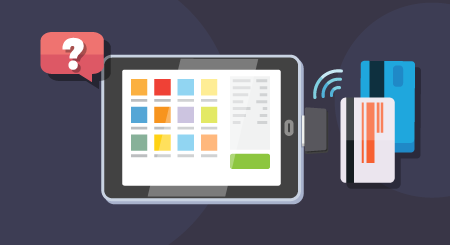Last updated on May 28, 2020
The hospitality point of sale systems are all in all computerised systems that incorporate registers, peripheral equipment, computers etc, the work done usually on a computer network, only to be used in hair salons, restaurants and hotels. Like most point of sale systems out there, hospitality systems keep a track of labour, sales and payroll and are able to generate records using both bookkeeping and accounting. They may be later accessed by restaurant corporate offices in restaurant point of sale, authorised parties or trouble shooters.
How have point of sale systems affected the restaurant industry?
Point of sale systems have revolutionized the fast food sector in the restaurant industry. With the latest technology, registers have become computers, sometimes with touch screens even. These registers then connect to a server which is often referred to as a central control unit or store controller. These printers and monitors are also then found on the network. In addition, any kind of remote server out there can monitor sales and employee monitoring software by connecting to store networks.
The most typical restaurant POS softwares are able to create and subsequently print guest cheques, print kitchen and bar orders so that they can start their preparation and also process various kinds of cards like debit and credit cards and also run reports. In addition to all this, some systems can implement wireless pagers and other electronic signature capturing devices.
Fast food industry
When it comes to the fast food industry, the displays might be there in the front counter, in the walk through cashier or the drive through for easier order taking and serving them up. Drive through windows take the orders at one counter and then cash it at another. In addition to the registers, the drive through and kitchen displays are then used to subsequently view the orders. Once you see the orders appear for you, they might be deleted or simply recalled by the touch screen and bump bars that every POS has nowadays. The drive through systems are often enhanced with the help of wireless intercoms. The efficiency of these systems has been able to decrease the amount of time it takes at the service and has increased the efficiency of taking orders in general.
Wireless POS
One of the newest innovations in the technology is wireless POS. Most restaurants who have a high volume use handheld and wireless POS go collect orders that are then directly sent to a server. The server then sends any required information to the kitchen in real and actual time. Wireless systems consist of many things, like drive through speakers and microphones. Sometimes, a speaker serves the dual purpose of sending and receiving messages. This is then wired to a center module or base station and then in turn, this will broadcast the message to headsets. These headsets might be an all in one headset or can be connected to a belt packaging.
In most hotels, POS softwares allow for transfers of meals from one room to the other with the push of a button or two. In such conditions, the software might have to be integrated with a property management software.
Newer and more sophisticated systems are slowly progressing onto the cluster database system and moving away from the file server type of a system. This further removes any kind of system downtime and crashing that can be linked for the back office file server. Not only that,this technology allows a hundred percent of the information to get stored and then pulled from the local terminal. This then eliminates the need to rely on a server for the entire system to operate.
The tablet POS systems that are popular for retail solutions are now starting to come out in the restaurant industry. Earlier these systems weren’t sophisticated and a lot of the earlier ones did not support the application of a remote printer in the kitchen. The tablet systems today are slowly getting used in all kinds of table service operations. Most of these tablet systems upload all the information to the internet so that managers and owners both, can view the results and subsequent reports from anywhere around the world where they have an internet connection and an access to the above mentioned documents.
Self-ordering systems
As the latest low priced touchscreens and tablet computers enter the market, slowly more and more restaurants have started implementation of self ordering through a tablet POS that’s permanently placed on every table out there. Now customers can sit and browse through a menu on the tablet and then place the order which is then recieved by the kitchen. The user interface is also very easy because the self order menus on the tablets have pictures to go along with the names to make it easier for the customer to chose what he wants to order. This makes the service easier and also saves a lot of manpower for the restaurant. However, everything depends on how intelligently the system can be programmed to serve the restaurant and the people, both.
Sometimes man power is necessary.
Always remember that self ordering systems aren’t always free of staff intervention. This is because some restaurants actually require an attendant to see what items the customers are selecting and then this can be placed only by the waiter who has the access to the tablet to do so. This prevents any kind of fake orders, that can be entered by meddling kids. In the case of alcoholic drinks, it becomes almost like a necessity for the waiters to first verify that the customer meets the age criteria before sending the order through.
The selection of the POS system of a restaurant is extremely critical because the daily functioning of the restaurant is then dependent on it and if anything goes slightly awry, then the staff and the management have to bear the brunt of it for years to come. This is why the restaurant management system must make sure that the investment being made is correct.




